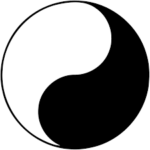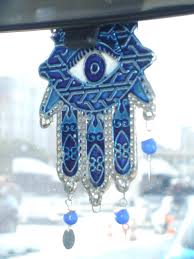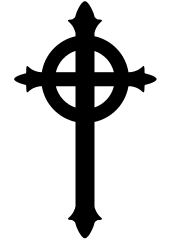
Taoism symbol
| Symbol | Taoism |
| Religion | Taoism |
| Origin | Taoism traces its origins to ancient China, with its roots in the philosophical texts attributed to Laozi (also spelled Lao Tzu) and Zhuangzi (Chuang Tzu). These texts, particularly the Tao Te Ching, are foundational to Taoist thought. |
| Meaning | The symbol commonly associated with Taoism is the Taijitu or Yin-Yang symbol. It represents the complementary forces of yin and yang, symbolizing harmony and balance in the universe. Yin represents darkness, passivity, and the feminine principle, while Yang represents light, activity, and the masculine principle. Together, they demonstrate the interdependence and interplay of opposites. |
| Appearance | The Taijitu symbol is typically depicted as a circle divided into two swirling sections, one black (yin) and the other white (yang). Within each section, there is a smaller circle of the opposite color, emphasizing the idea that each contains an aspect of the other. |
| Colors | The colors traditionally associated with the Taijitu are black and white, representing the contrast between yin and yang. However, it's worth noting that interpretations and representations may vary, and some versions of the symbol may incorporate additional colors or variations. |
| Usage | The Taijitu symbol is used in various contexts within Taoism, including religious rituals, meditation practices, and as a symbol of philosophical principles. It is also widely recognized outside of Taoism as a symbol of balance and harmony. |
| History | The history of the Taijitu symbol is intertwined with the development of Taoist philosophy and practices, dating back to ancient China. Its exact origins and early usage are not definitively documented but are believed to be closely linked to the foundational texts of Taoism. |
| Popularity | The Taijitu symbol is well-known globally, both within and outside of Taoist communities. It has gained popularity beyond Taoism as a symbol representing balance and harmony in various contexts, including philosophy, psychology, and spirituality. |
| Importance | Within Taoism, the Taijitu symbol holds significant philosophical and spiritual importance, representing the fundamental principles of balance, harmony, and the interconnectedness of all things. It serves as a visual reminder of Taoist teachings and guides practitioners in understanding the nature of existence. |
| Complexity | While the Taijitu symbol appears simple in its design, it embodies profound philosophical concepts central to Taoist thought, including the dynamic interplay of opposites, the cyclical nature of change, and the pursuit of harmony and balance. |
| Emotions | While the symbol itself does not inherently evoke specific emotions, its representation of balance, harmony, and the interplay of opposites can evoke feelings of tranquility, unity, and acceptance in individuals who resonate with Taoist philosophy and principles. |
The most well-known symbol of Taoism is the yin yang, also known as the taijitu. It is a circular emblem divided into two equal halves, one black and one white, with a curved line separating them. The black half represents yin, which is associated with darkness, femininity, and passivity. The white half represents yang, which is associated with light, masculinity, and activity.
The yin and yang symbol is not simply a representation of opposites, but rather a depiction of how these opposites are interconnected and interdependent. The curved line between them signifies that they are constantly flowing and changing, and that each contains a seed of the other. This reflects a core Taoist belief in the balance and harmony of all things in the universe.
The yin and yang symbol is used in many different ways in Taoism, from traditional Chinese medicine to martial arts. It is a reminder that everything in life is in a state of flux, and that we should strive to find balance and harmony in our own lives.
View rest of the Religious Symbols, Taoism Symbols
-
444 angel number
-
333 angel number
-
222 Angel Number
-
Christianity
-
Catholic Fish
-
Hamsa Hand
-
Jesus Cross
-
Presbyterian
-
Judgement








